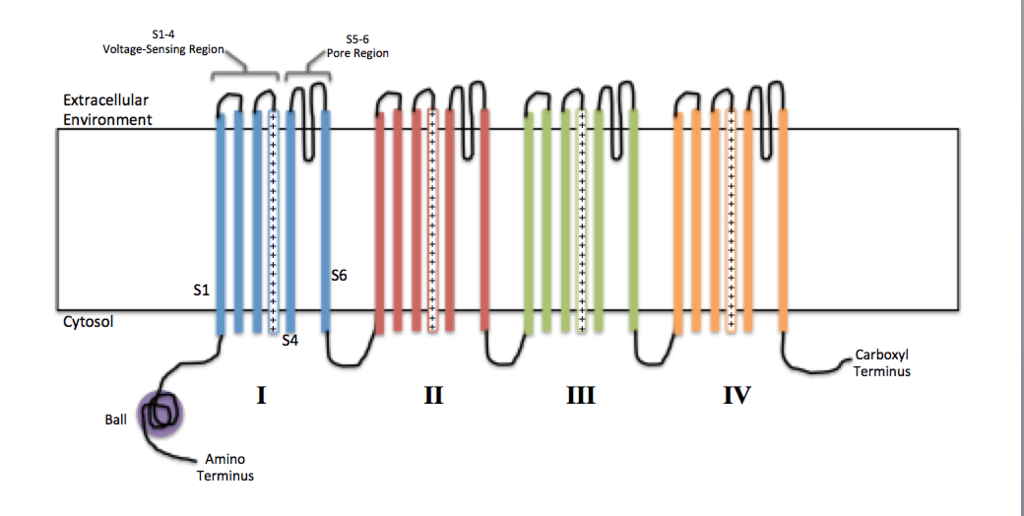Difference Between Voltage Gated and Ligand Gated Ion Channels
The key difference between voltage gated and ligand gated ion channels is that the voltage gated ion channels open in response to a voltage difference while the ligand gated channels open in response to a ligand binding.
Membrane transport is an important mechanism that allows ions to enter and release the cell. Thus, ion channels are important molecules that aid in the membrane transport. Nevertheless, most of the ion channels are embedded in the cell membrane, and they are proteins. However, some can be channel proteins while others are carriers. Channel proteins are of two types; gated channels or non-gated channels. Gated ion channels are three types; namely, voltage gated, ligand gated and stress-activated ion channels. The entry side of both these channels normally exists as closed, and they open under specific conditions only.
CONTENTS
1. Overview and Key Difference
2. What are Voltage Gated Ion Channels
3. What are Ligand Gated Ion Channels
4. Similarities Between Voltage Gated and Ligand Gated Ion Channels
5. Side by Side Comparison – Voltage Gated vs Ligand Gated Ion Channels in Tabular Form
6. Summary
What are Voltage Gated Ion Channels?
Voltage gated ion channels are one type of gated ion channels that involves the membrane transport. They are transmembrane proteins. Thus, they open up as a response to the voltage difference across the cell membrane. When the electrical potential is present near the voltage gated channel, it changes the conformation of the channel protein. It opens up the channel across the membrane and ions enter or exit through the passage.

Figure 01: Voltage Gated Ion Channels
Voltage gated ion channels are mostly located in the nervous system, and they are very ion-specific channels. Sodium Channels, Potassium Channels and Calcium Channels are a few examples of voltage gated ion channels.
What are Ligand Gated Ion Channels?
Ligand gated ion channels are the second type of gated ion channels present in the cell membrane. The ligand is a small chemical molecule that interacts with the receptors of the channel proteins. They are a specific type of stimulating molecules. Once the ligand binds with the receptor, it will change the shape or the conformation of the channel protein.

Figure 02: Ligand Gated Ion Channels
The ligand gated channels will open so that the ions can easily enter or exit through these channels to or from the cell. Receptors can present in either the extracellular side or the intracellular side of the membrane. Acetylcholine receptors are one of the most studied ligand gated ion channels.
What are the Similarities Between Voltage Gated and Ligand Gated Ion Channels?
- Both voltage gated and ligand gated ion channels are gated ion channels.
- They are important for proper activation of the post synaptic neuron.
- Voltage Gated and Ligand Gated Ion Channels are transmembrane protein molecules.
What is the Difference Between Voltage Gated and Ligand Gated Ion Channels?
Ions enter cells via cell membrane through ion channels that are gated channels or non gated ion channels. Voltage gated and ligand gated ion channels are two types that respond to a voltage difference and ligand binding respectively. Voltage gated ion channels are ion specific while ligand gated ion channels are not selective. The below infographic presents the difference between voltage gated and ligand gated ion channels in tabular form.

Summary – Voltage Gated vs Ligand Gated Ion Channels
Voltage gated and ligand gated ion channels are two types of transmembrane proteins that involve membrane transport of ions. They open up under specific conditions and facilitate the ion transportation. Until then they remain closed. Voltage gated ion channels open when there is a voltage difference across the membrane. Ligand gated ion channels open the passage when they bind with ligands that are small chemical molecules. This is the difference between voltage gated and ligand gated ion channels.
Reference:
1.Purves, Dale. “Voltage-Gated Ion Channels.” Advances in Pediatrics., U.S. National Library of Medicine, 1 Jan. 1970. Available here
Image Courtesy:
1.”Subunits of ion channels in membrane”By Efazzari – Own work, (CC BY-SA 4.0) via Commons Wikimedia
2.”1216 Ligand-gated Channels”By OpenStax (CC BY 4.0) via Commons Wikimedia
ncG1vNJzZmivp6x7pbXFn5yrnZ6YsqOx07CcnqZemLyue8OinZ%2Bdopq7pLGMm5ytr5Wau27CzqWrmp%2BVYrSiwMSdZJqmlGK5qrPAp5tmn5GpsqV5yKilZpuYlruvscusZg%3D%3D